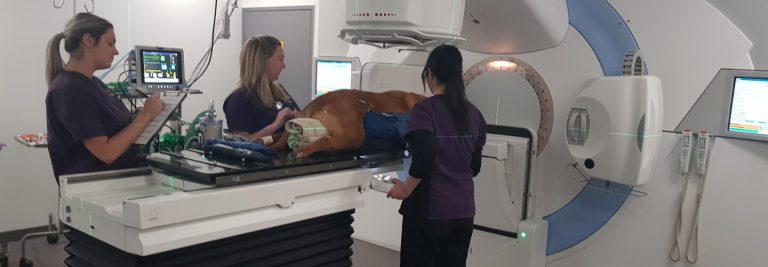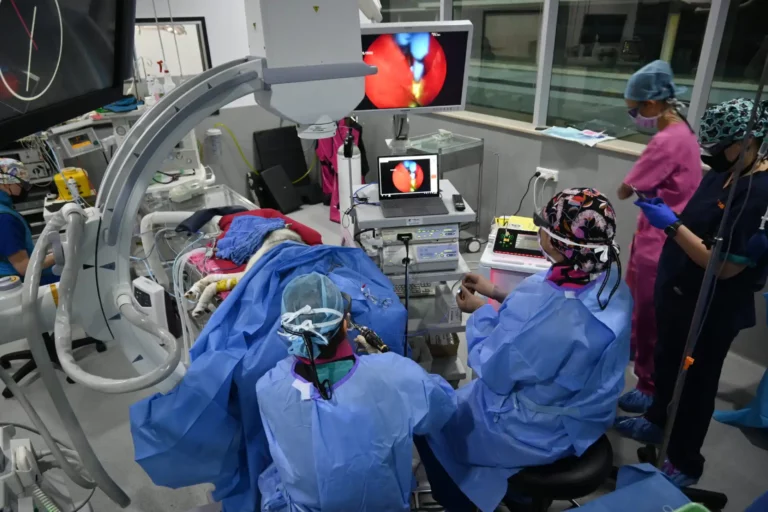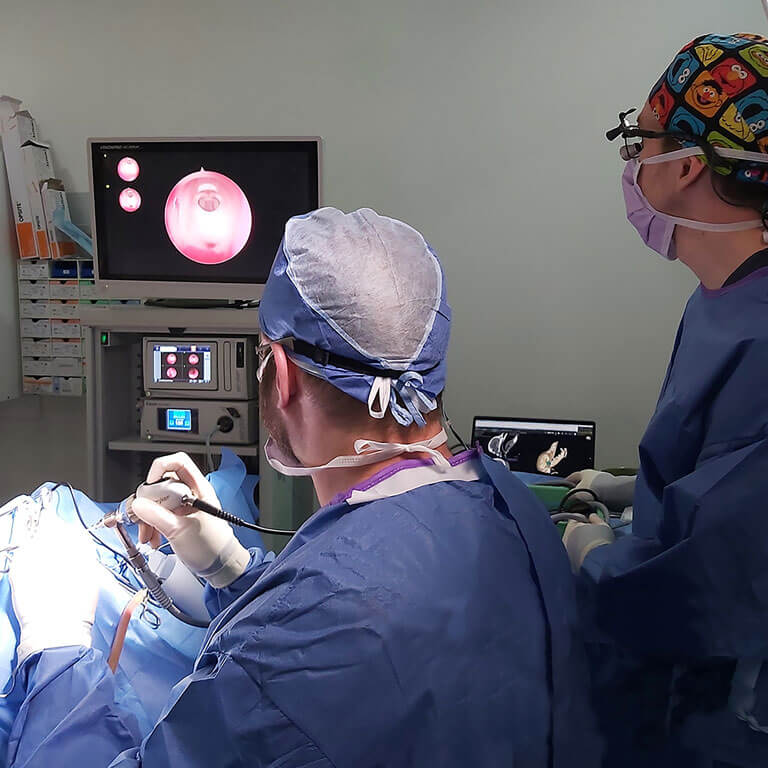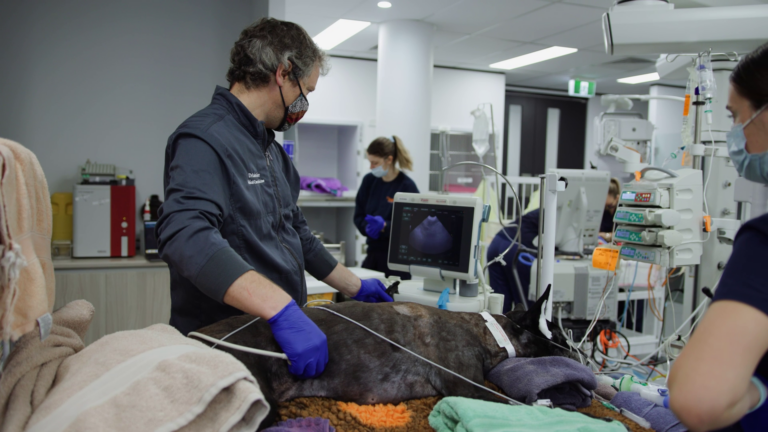By Dr Spela Bavcar (Oncology Specialist)
Lymphoma is a cancer of the lymphocytes, a type of white blood cell, and can involve lymph tissue anywhere in the body. Organs that normally contain large numbers of lymphocytes include lymph nodes, spleen, and bone marrow. Multiple other organs, including the skin, gastrointestinal tract, liver, brain, lungs, and eyes, can become infiltrated by cancerous lymphoma cells.
Lymphoma types and symptoms in dogs
Lymphoma may be divided into several different forms depending on the predominant location of the tumour. Their symptoms also differ depending on the location of the tumour.
Multicentric lymphoma
Multicentric lymphoma is the most common form of lymphoma in dogs, and occurs when cancer cells infiltrate multiple lymphoid. In many cases, the most noticeable sign of the disease is enlargement of the external lymph nodes that are located in the neck, in front of the shoulders, and behind the knees. Some dogs may not show other signs of illness or may have only mild signs such as fatigue or decreased appetite. Other dogs may have more severe signs such as weight loss, vomiting, diarrhoea, excessive thirst, weakness or difficulty breathing. Internal organs such as the liver, spleen, and bone marrow, are commonly involved.
Gastrointestinal tract lymphoma
Lymphoma can originate in the stomach or the intestines and surrounding lymph nodes, and sometimes other organs. Dogs can have a mass or abnormal thickening of the stomach or intestinal walls due to infiltration by cancer cells. Symptoms from this usually includes vomiting, diarrhoea, weight loss, lethargy and/or a poor appetite.
Mediastinal lymphoma
The mediastinum is a lymph tissue containing space between the lungs in the chest cavity. Dogs with this type of lymphoma may have breathing difficulty or may have non-specific signs such as lethargy, vomiting/regurgitation, increased thirst and urination, weight loss or poor appetite. If mediastinal lymphoma is the primary disease, other lymphoid organs are usually not involved. However, mediastinal involvement can occur with the multicentric form of the disease.
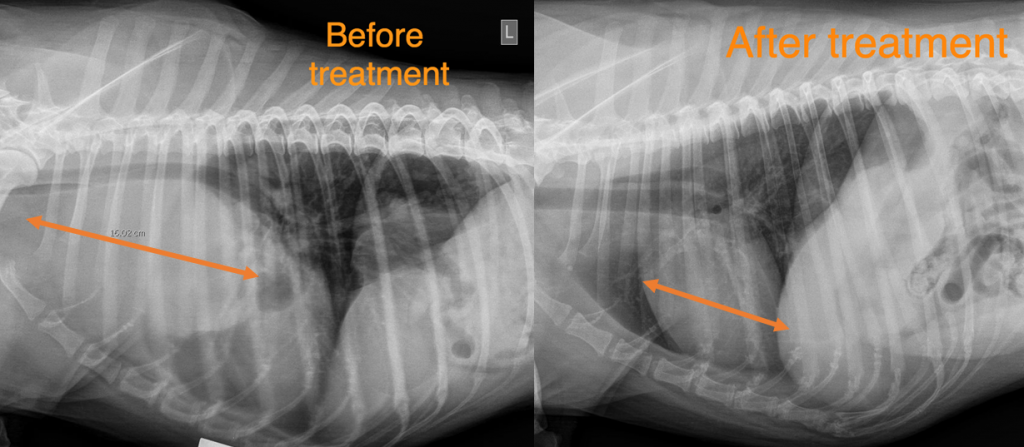
Cutaneous lymphoma
Lymphoma can originate in the skin. Dogs with cutaneous lymphoma may have flaky, scaly, reddened skin and can be very itchy. They may have lumps in the skin or below the skin surface which can ulcerate and cause discomfort. Infections following on from these skin issues are also common. The footpads, oral cavity, internal organs, and external lymph nodes may also be involved.
Bone marrow lymphoma (leukaemia)
If the cancer is only found in the bone marrow, it is referred to as leukaemia. Symptoms of leukaemia in dogs usually result from cancerous lymphoma cells crowding out the normal red, white, and platelet cells in the bone marrow. If red blood cells are depleted, the dog may be lethargic, tire easily, pant excessively and have a poor appetite. If the white blood cell count is low, infections may occur. If the platelets count is low, the dog may be predisposed to bleeding episodes.
Diagnosing lymphoma in dogs
As an owner, your vigilance can be priceless in the early diagnosis of lymphoma. Regularly feeling around for lymph nodes (such as during grooming) and making note of their size can help spot issues. If you feel anything unusual, take your dog to see your local veterinarian.
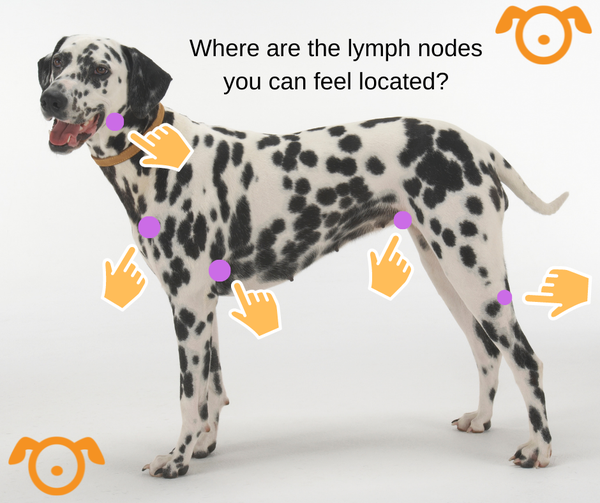
Confirming lymphoma in a dog requires microscopic analysis of a sample of affected tissue, obtained either by fine needle aspiration or biopsy. At SASH, this analysis can be performed by our in-house Pathologist. To determine which other organs, if any, are affected (called staging of the disease), various tests are performed, such as blood and urine analysis, imaging of the chest and abdomen and bone marrow sampling (interpreted by SASH in-house Diagnostic Imaging Specialists). Special staining of samples obtained from an aspirate or biopsy of affected tissue, and/or advanced molecular testing on similar samples, can be performed to determine whether the lymphoma originates from a B-cell or T-cell lymphocytes – i.e. B cell lymphoma or T cell lymphoma (relevant for prediction of prognosis).
The information provided by these staging tests allows us to determine the extent of the disease, to make treatment recommendations best suited for each patient, and to predict outcomes.
Lymphoma treatment in dogs
In the large majority of cases, chemotherapy is the recommended treatment for lymphoma in dogs. Fortunately, cancerous lymphoma cells are typically quite sensitive to chemotherapy drugs.
There are a number of different chemotherapy drugs and treatment plans that can be used for lymphoma. Multi-drug protocols are considered the “gold standard” of therapy and generally result in longer remission times (resolution of detectable cancer and related symptoms). Less intensive combinations of these drugs, or single-drug programs, can also be effective at inducing and maintaining remission. However, the long-term outcome is usually not as favourable as when multi-drug protocols are used. This is because cancer cells develop resistance to chemotherapy sooner if fewer drugs are used, or if the frequency of treatments is not optimal.
These are factors that will be considered and discussed with you by a Medical Oncologist, an expert in chemotherapy.
Chemotherapy side effects in dogs
Most dogs tolerate chemotherapy well and experience minimal side effects. Quality of life is an important consideration in veterinary patients. The goal of therapy is therefore to extend good quality of life without inducing unacceptable levels of toxicity. Please see the Chemotherapy for dogs page for more information regarding the side effects of chemotherapy.
Lymphoma outcomes in dogs
The outcomes for dogs with lymphoma depend on multiple factors including where the lymphoma originates from, how widely spread it is, and the type of lymphoma it is. Although also very serious, B-cell lymphoma is generally more favourable to T-cell lymphoma.
Approximately 80 to 90% of dogs with multicentric lymphoma (the most common form of the disease) will achieve remission when chemotherapy is used. However, remission is not a cure, In dogs, relapse (reoccurrence of the cancer) is inevitable for most lymphoma patients. Nevertheless, appropriate treatment from an Oncologist will allow the dog to experience a good quality of life, often for an extended period of time.
Remission rates for other forms of the disease, including the gastrointestinal and cutaneous forms, are not as high. The reasons for this are not yet clearly defined.
If you notice anything unusual about your dog, please take them to see your local vet. If cancer is suspected, ask for a refer to SASH. An Internal Medicine Specialist will be able to confirm a diagnosis for lymphoma and refer you to one of SASH’s world-class Oncology Specialists for treatment. Whether it is lymphoma or any other form of cancer, SASH’s Animal Cancer Centre is Australia’s leading centre for providing care to cancer patients.
Call us to book a consult by clicking the contact button below.
